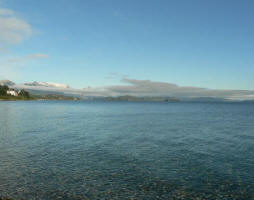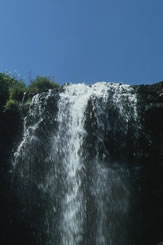 Forcing the Danube to go straight in Croatia
Forcing the Danube to go straight in Croatia
Plans to tame the river Danube in Croatia so that cargo can continue to be shipped efficiently between countries have raised concerns that the changes could greatly damage precious wetlands and wildlife in the north-east of the country.
"So how did this this stretch of the Danube survive like this until now?" I ask Arno Mohl, conservation expert of the Worldwide Fund for Nature, as we paddle our orange canoe downriver.
We let our craft glide almost effortlessly with the current, past a shore thick with willows up to their willowy waists in the flood waters.
A rare, white-tailed eagle arches lazily overhead, then flaps away slowly upriver, its mind on higher things. Hook-necked cormorants ("soldiers of trouble" their name means in Hungarian) stand sentinel on bare branches, immune to the noonday sun.
"The river in Croatia and Serbia escaped massive regulation, mainly due to the collapse of Yugoslavia in the war in the 1990s," says Arno.
But now the Croatian Inland Waterway Agency wants to turn its banks into embankments, build groynes (T-shaped barriers out into the river) and straighten its course. To discipline the river, to stop it daydreaming.
On the opposite bank, the Serbian authorities have similar ideas and are waiting to see the fate of the Croatian project.
In short, they want to make the same mistakes we made in the 1970s and 80s," Arno the Austrian explains.
Earlier this year, I watched bulldozers at Grimsing, in the Wachau region upstream of Vienna on the Austrian Danube, removing the rocks, and redigging the meanders, the oxbows (and other beautiful words in the English language) reconnecting the Danube to its hinterland.
The argument between the river transport lobby and the environmentalists is a simple one.
If the river is allowed to wander to and fro like a child's mind on the last days of school before the summer holidays, argue the engineers, forming new islands one day, destroying them the next, then the main navigable channel silts up.
The barges stand idle, unable to travel.
Give us one - ideally two - lanes of motorway down the middle of the Danube, argue the barge boys.
And the only way to do that is to "complete" river-regulation work which began in the 19th Century.
Stop meddling, reply the environmentalists.
Allow the river to swell from March to August, loaded with the spring rains and the snowmelt of the mountains of Austria and Italy, of the Engadine in Switzerland, of Germany, Slovakia, Hungary, Romania, Bulgaria and Ukraine.
| Contact information |
Nick Thorpe BBC News, Croatia
|
|---|---|
| News type | Inbrief |
| File link |
http://www.bbc.co.uk/news/magazine-18549529?dm_i=GLX,V7AV,65Y17U,2KM8D,1 |
| Source of information | Nick Thorpe, BBC News, Croatia |
| Subject(s) | HYDRAULICS - HYDROLOGY , NATURAL MEDIUM , POLICY-WATER POLICY AND WATER MANAGEMENT , PREVENTION AND NUISANCES POLLUTION , RISKS AND CLIMATOLOGY |
| Geographical coverage | Croatia |
| News date | 04/07/2012 |
| Working language(s) | ENGLISH |
 you are not logged in
you are not logged in





